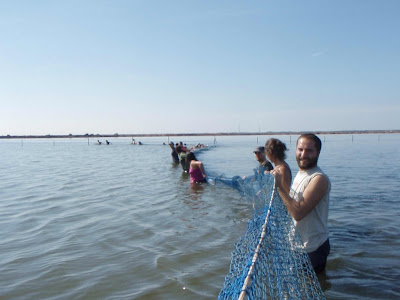Samhain in Seewinkel
Samhain is the Pagan festival that falls midway between the Autumn Equinox (Mabon) and the Winter Solstice (Yule) and is traditionally celebrated on 31st October. It comes deep into Autumn; only a few stragglers of the summer migrant birds linger on, whilst the geese and thrushes from the Arctic tundra are already pushing southwards. Nipped by the first frosts, the golden leaves of the deciduous trees have mostly fallen to the ground, dislodged by the autumnal gales.
Certainly one can still relish mild, mellow days, but the sun is low in the sky, its radiation weak, and to imagine that there is any remnant of summer is simply to kid oneself. Summer is gone.
This year I am passing the Samhain period around the Seewinkel National Park, close the borders with Slovakia and Hungary, on the eastern shore of the inland steppe lake of Neusiedler See (Lake Neusiedl).
Certainly one can still relish mild, mellow days, but the sun is low in the sky, its radiation weak, and to imagine that there is any remnant of summer is simply to kid oneself. Summer is gone.
This year I am passing the Samhain period around the Seewinkel National Park, close the borders with Slovakia and Hungary, on the eastern shore of the inland steppe lake of Neusiedler See (Lake Neusiedl).
 A Hungarian White Donkey greets the Samhain dawn
A Hungarian White Donkey greets the Samhain dawn(see here for more information on these unique donkeys)

The birch trees start to look bare as they lose their leaves
against a backdrop of fine-weather cumulus clouds
against a backdrop of fine-weather cumulus clouds
 ...and the grapes have been harvested for the 2009 vintage.
...and the grapes have been harvested for the 2009 vintage.One small bunch has escaped and will become food for the birds
 ...and Clouded Yellow butterflies take advantage of the weakening sunshine to sip the last nectar before looking for a crevice to hibernate.
...and Clouded Yellow butterflies take advantage of the weakening sunshine to sip the last nectar before looking for a crevice to hibernate. The village of Illmitz, in the heart of the Seewinkal National Park, catches the rays of the setting sun in the gathering gloom of an evening storm
The village of Illmitz, in the heart of the Seewinkal National Park, catches the rays of the setting sun in the gathering gloom of an evening stormI wish a Happy Samhain to all my readers







































